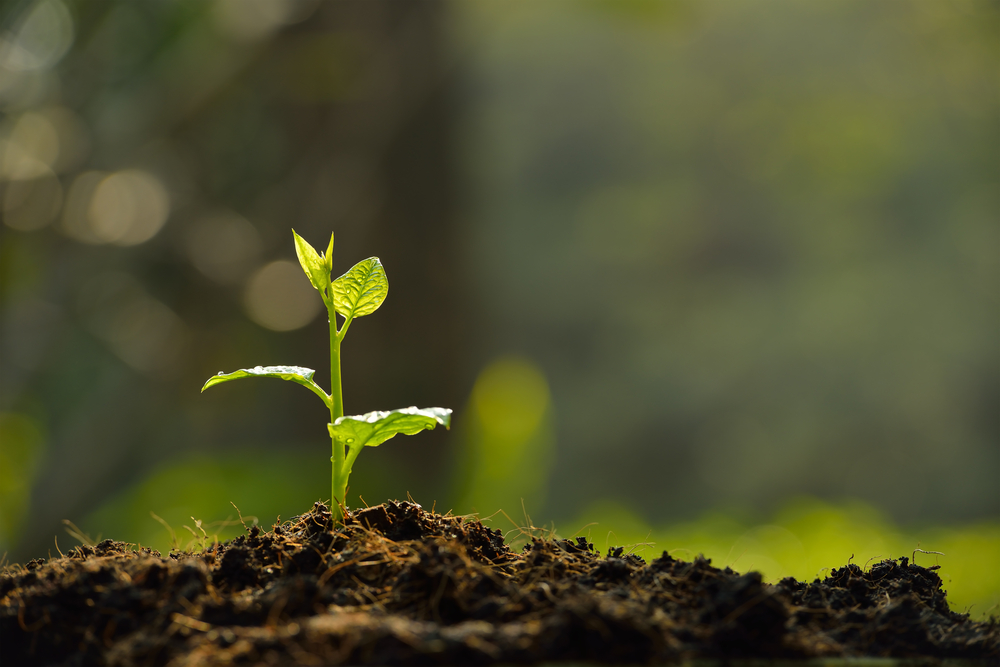How Does Music Affect Plant Growth?

Music for plants is a real thing.
Your students’ grandparents could have been familiar with an album released in 1976 called Plantasia, a collection of music played on a Moog synthesizer specifically for plants to listen to. Your student’s parents could have come across “Brainwave” music for plants. And plant lovers of all ages can find a collection of music for plants on Spotify.
And there is a growing collection of scientific research that confirms the idea that sound, in general, and music, in particular, affect plant growth.
- Some plants can sense sound and make sounds through the motion of fluids through the xylem.
- In one experiment, sound stimulated oxygen uptake in cabbage, cucumber seedlings, and mature plants.
- In other experiments, sound was shown to direct plant growth, increase plant survival, accelerate germination, increase fruit nutrient content, delay fruit ripening, and increase pollination.
The TV show MythBusters tackled this topic in 2004. They set up seven greenhouses with the same kinds of plants, playing seven types of sound. In one greenhouse, they played death metal. In another, they played classical music. They exposed plants to two different recordings of speech, one of negative speech, one of positive speech, and one with no sound. Plants grew best when exposed to death metal and poorest when they received no sound.
The idea that music can affect the physiology of plants is easy for students to understand. Even better, from the point of view of teaching young scientists, it lends itself to testable hypotheses. So, how can your students verify that music has an effect on—or has no effect on—growth at various stages of plant development?
We at Modern Biology, Inc. have two suggestions. One involves approximate measurements and leaves your results open to confounding variables, and the second allows your students to make precise measurements and eliminates confounding variables.
A Traditional Method of Testing the Effect of Music on Plant Growth
The quick and easy setup for a test of the effects of music on plant growth only requires similar plants in similar pots given similar care, a quiet growing area, a growing area exposed to music all the time (such as Muzak), and a smartphone app for making measurements. You could also compare your control plant to a specimen where a news station is played 24 hours a day and compare it to one with a different network.
Use your smartphone app to record the dimensions of each plant at the beginning of the experiment. Make sure the two locations have similar lighting and climate control. Give all of your plants the same amount of water and fertilizer. Measure them again at the end of a month and see if there are differences.
If you worked with trays of seedlings, you could collect enough data to apply simple statistical analyses. After students confirm or fail to confirm their hypotheses, they can take a second look at the experiment for confounding variables.
Modern Biology, Inc.’s Method of Testing the Effect of Music on Plant Growth
A cleaner method of measuring the effects of music on plant growth can be accomplished through a simple modification of Modern Biology, Inc.’s Experiment B4-1: Effects of Temperature on Cell Respiration. Instead of measuring changes in O2 consumption at different temperatures, measure the difference in O2 consumption in different chambers, each wrapped with its own bone-conduction headphones. This way, you can bathe the seedings in their own sound regime without disturbing the class or interfering with other test groups or your control. Complete instructions for this experiment are included with the kit.
Modern Biology, Inc. is the supplier of choice for over 80,000 teachers in the United States. We are available on weekdays to answer your questions. Contact us at (765) 446-4220 or email us today!
 Due to Customs restrictions, we only accept orders from educational institutions within the Continental United States, Alaska or Hawaii.
Due to Customs restrictions, we only accept orders from educational institutions within the Continental United States, Alaska or Hawaii.